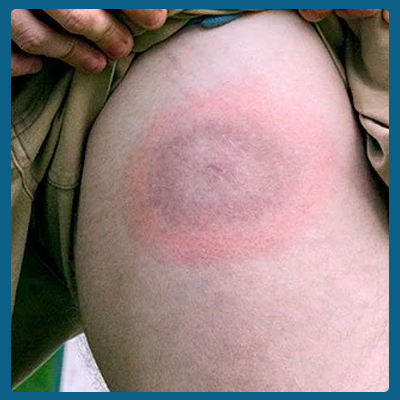

Chronic Lyme disease occurs when a person who’s treated with antibiotic therapy for the disease continues to experience symptoms. The condition is also referred to as post Lyme disease syndrome or post-treatment Lyme disease syndrome.
According to the New England Journal of Medicine, approximately 10 to 20 percent of people who are treated with the recommended antibiotics will have disease symptoms that persist after they complete treatment. These symptoms can include fatigue, joint or muscle aches, and cognitive dysfunction. They may last up to six months or longer. These symptoms can interfere with a person’s normal activities and may cause emotional distress as a result. However, most people’s symptoms improve after six months to a year.
It’s not known why some people develop post-treatment Lyme disease syndrome and others don’t. It’s also unclear what exactly causes the chronic symptoms. According to the Columbia University Medical Center, doctors should treat cases on an individual basis. A person’s specific symptoms and medical history, as well as the latest research, should be used to guide treatment.
CAUSES OF CHRONIC LYME DISEASE
Lyme disease is a bacterial infection that’s caused by the bacteria Borrelia burgdorferi. one can become infected if someone bitten by a tick that carries the bacteria. Typically, black-legged ticks and deer ticks spread this disease. These ticks collect the bacteria when they bite diseased mice or birds. Lyme disease is also called borreliosis or, if the symptoms are neurologic, Bannwarth syndrome.
Most people with Lyme disease are treated successfully with a course of antibiotics. People with Lyme disease typically have a rapid and complete recovery.
The signs and symptoms of Lyme disease vary. They usually appear in stages, but the stages can overlap.
A small, red bump, similar to the bump of a mosquito bite, often appears at the site of a tick bite or tick removal and resolves over a few days. This normal occurrence doesn't indicate Lyme disease.
However, these signs and symptoms can occur within a month after one have been infected:
Rash. From three to 30 days after an infected tick bite, an expanding red area might appear that sometimes clears in the center, forming a bull's-eye pattern. The rash (erythema migrans) expands slowly over days and can spread to 12 inches (30 centimeters) across. It's typically not itchy or painful but might feel warm to the touch.
Erythema migrans is one of the hallmarks of Lyme disease, although not everyone with Lyme disease develops the rash. Some people develop this rash at more than one place on their bodies.
If untreated, new signs and symptoms of Lyme infection might appear in the following weeks to months. These include:
Several weeks after infection, some people develop:
Arsenicum Album : Useful for lyme disease with weakness and body fatigue with extreme restlessness. There is tearing pains in the limbs, which gets worse during the night and while the person is at rest after exertion.Very useful when there is a sudden decrease in strength during the second stage of Lyme disease.
Ledum Palustre : Useful for lyme disease after insect stings, including tick bites.There is twitching sensation around skin rash. The area of the tick bite is cold to the touch.
Rhus Toxicodendron : Useful for Lyme disease when patients suffers from arthritis. There is stiffness and painful swelling of the knee joint which becomes better by warmth. Also useful for joint problems in the elbows and ankles in some instances of Lyme disease. There is tingling sensation in feet and other places of the body
Belladonna : Very useful medicine for lyme disease with migrainous attack.Useful for headache which is pulsating and throbbing in character. There is a feeling of extreme fullness in the head.Useful when cold air, head bath with cold water acts as aggravating (increasing) factor for the migraine and applying hard pressure on the head helps relieve the pain.
Kali Phosphoricum : Useful for Lyme disease where there is mental fatigue from overwork. There is dullness of mind, loss of memory, a lack of interest in talking and the person suffers from forgetfulness. Useful for low, nervous condition with sensitivity.